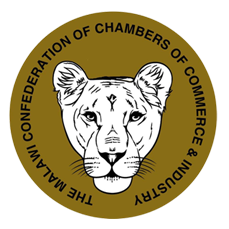- +265 (0) 999 970 950 / 951
- mccci@mccci.com
Business Environment
- Home
- Business Environment
About Malawi
Malawi is a land-locked country in south-eastern Africa, bordered by Mozambique, the United Republic of Tanzania and Zambia. It has a primarily agrarian economy, with 80 percent of the population living in the rural areas. The share of agriculture in GDP has dropped in the last decade from almost 40 percent in 2002 to around the average of 21 percent in recent years. Simultaneously, share of service (in GDP) has been rising to about 55 percent owing to reforms in the financial services sector, a boost in the telecom sector driven by a rise in mobile subscriptions and privatization of the transport sector. Additionally, the share of industrial activity (including mining) has been rising in recent years. Malawi’s position in the continent means it is reliant on transit corridors and ports in neighboring countries. The agricultural sector heavily dependent on rain-fed agriculture to maintain food security, Malawi is exceedingly vulnerable to climatic shocks.
The country offers a business environment with political stability, a market-oriented and liberalized economy, competitive labour markets, preferential access to several markets, an investor-friendly climate, improving infrastructure and untapped investment opportunities. The country also has streamlined investment establishment procedures such as a One-Stop Centre to assist investors. Further, the Malawi government has undertaken reforms to ensure that tax, labour, environment, health and safety laws continue to support foreign investment. In terms of ease of doing business, Malawi performs better than the African average (and better than 38 other African countries) when dealing with construction permits, wp-signup.phping new property, getting credit, protecting minority investors, paying taxes, trading across borders, enforcing contracts and resolving insolvency associated with new businesses according to the World Bank in 2020. Moreover, the government is keen to offer public–private partnerships to facilitate and promote strategic infrastructural investment through financial assistance, technical know-how, logistical support and operational management.
Within the basket of goods exported by Malawi, the top ten products comprised 70 percent of total goods exports in 2015, which rose tremendously to 82.5 percent in 2020. Of these, tobacco alone made up 47 percent on average of total exports in the period 2015–2020. Malawi is the fifth-largest exporter of burley tobacco and relies heavily on these exports to support its economy in terms of export earnings and employment generation. Exported variety is produced by small-scale farmers in small landholdings, and production remains dependent on the price of the preceding year. The second largest export is black tea, followed by cane sugar, which is produced chiefly for exports, nuts, peas, and soybeans. Malawi primarily exports to its regional partners in South Africa, Egypt, Zimbabwe, and Mozambique, as well as its extra-regional partners in the European Union (Belgium, Germany, and the Netherlands), the United States (US), and the United Kingdom (UK).
Economic Facts of Malawi
The unemployment rate in Malawi decreased to 5.60 percent in 2022 from 5.70 percent in 2021. The unemployment rate in Malawi averaged 4.99 percent from 1991 until 2022, reaching an all-time high of 5.70 percent in 2020 and a record low of 4.80 percent in 1991. The top three sectors that employ more people are agriculture, forestry, and fishing, construction and transportation and storage according to NSO 2018.
The economy of Malawi is heavily dependent on agriculture, which employs over 64% of the population, and it is vulnerable to external shocks, particularly climatic shocks. Agriculture accounted for about one-third of GDP and about 80% of export revenue.
The exchange rate of the kwacha undergoes fixed periodical adjustments, but since 1994 the exchange rate has floated. In 2005, administrative measures were put in place to peg the exchange rate with other currencies. Banknotes are issued by the Reserve Bank of Malawi.
Malawi’s trade balance is structurally in deficit. Malawi's trade remains heavily dependent on agriculture, and its exports and imports reflect this reliance on primary and intermediate goods: tobacco accounts for more than half of total exports, as the country is one of the world's largest producers of tobacco. Other major exports include tea, sugar, and agricultural products in general. Imports are led by refined petroleum (7.2% of total imports), machinery, transport equipment, fertilizers, spare parts and medicaments.
Year-on-year inflation rate for April stood at 32.3 percent, an increase from 31.8 percent recorded in March 2024, according to the National Statistical Office. Food inflation rate was seen at 39.9 percent in the month under review, up from 38.8 percent recorded in March 2024, representing a one percent increase. Non-food inflation similarly increased by 0.4 percent, from 22.2 percent in March 2024 to 22.4 percent in April 2024.
The Malawi 2063 (MW2063) is Malawi's national vision through which Malawians aspire to transform the country into an inclusively wealthy and self-reliant nation by the year 2063. It is anchored on the three pillars namely; Agricultural Productivity and Commercialization, Industrialization and Urbanization. The MW2063 will be operationalized through four medium term strategies of 10 years each, starting with the MW 2063 First 10-year Implementation Plan (MIP-1) from 2021 to 2030. The MIP-1 is a collection of minimum catalytic interventions that have been determined to contribute to two key milestones of graduating the country to a middle-income status and meeting most of the United Nations Sustainable Development Goals (SDGs) by 2030.
Malawi central bank implemented a significant policy adjustment on February 1st, 2024, raising the policy rate by 200 basis points from 24 percent to 26 percent. This measure aims to address the persistent inflationary pressures, which have surpassed the targeted range of five percent. The central bank however kept Lombard rate at 20 basis points above the policy rate and the Liquidity Reserve Requirement (LRR) ratio at 7.75 percent for domestic currency deposits and 3.75 percent for foreign currency deposits.
The Malawi Stock Exchange (MSE), has been in existence since 1994 but started equity trading in November 1996 when it first listed National Insurance Company Limited (NICO). Prior to the listing of the first company, the major activities that were being undertaken were the provision of a facility for secondary market trading in Government of Malawi securities, namely Treasury Notes and Local wp-signup.phped Stock. 16 companies are listed on the MSE.





